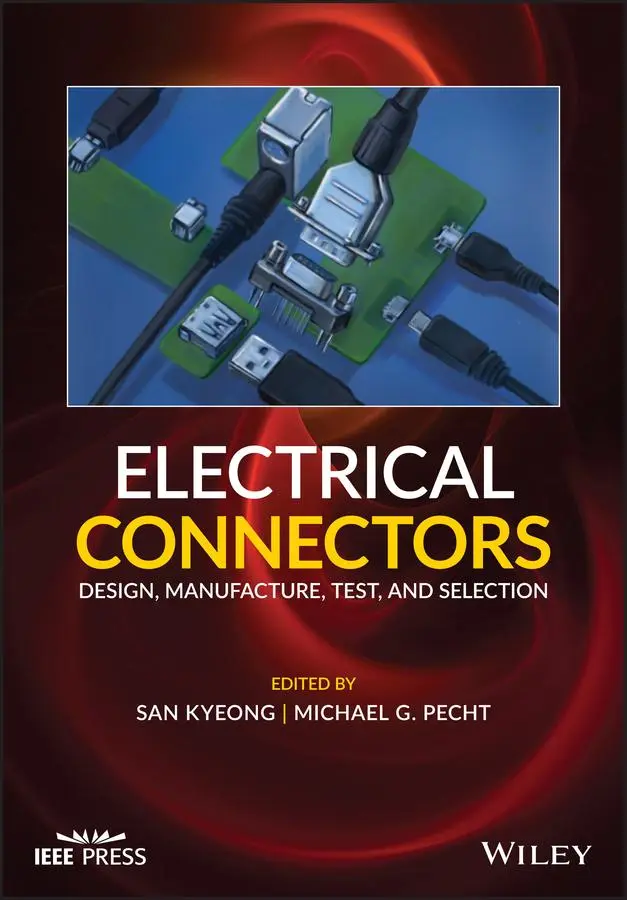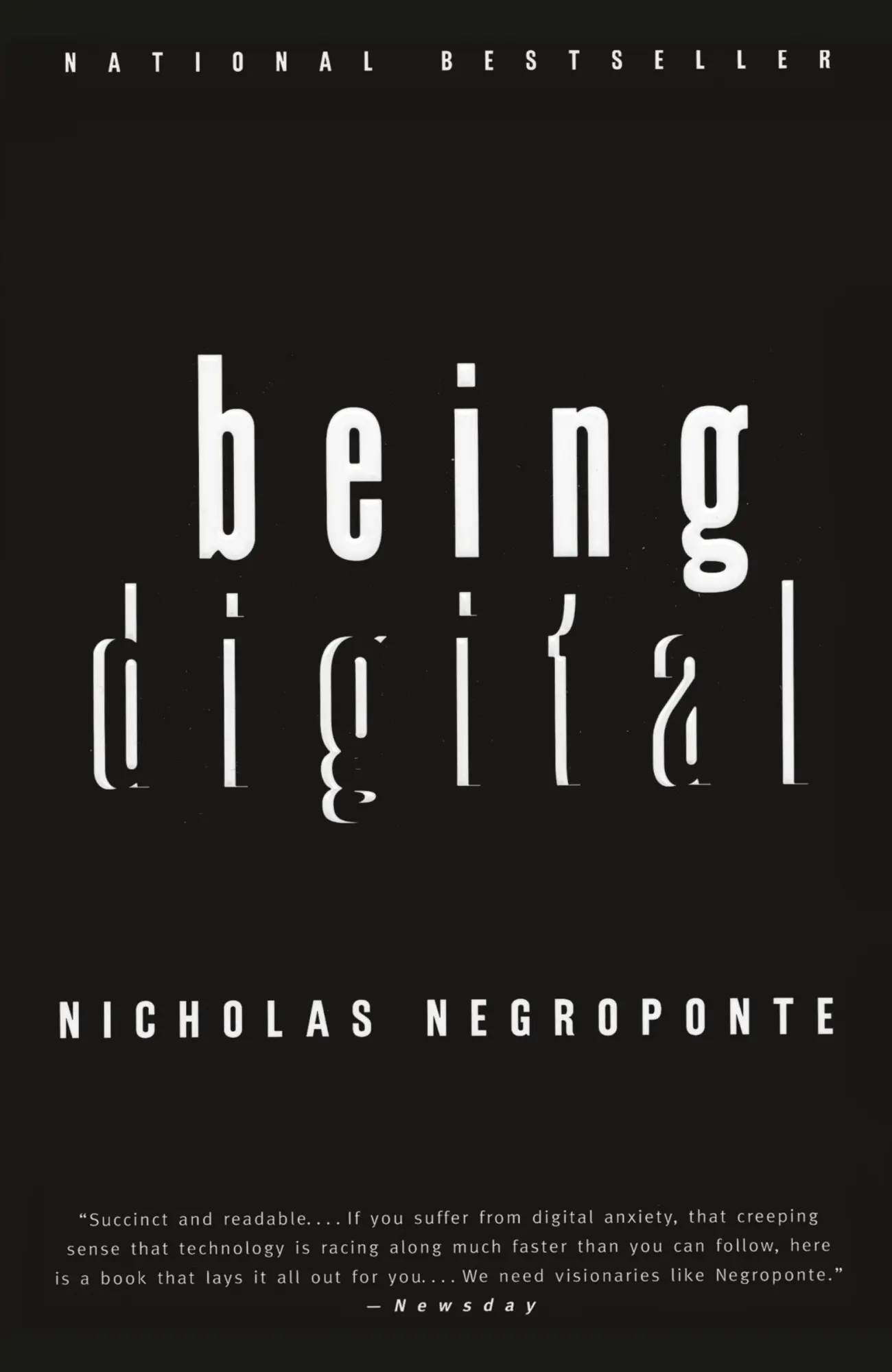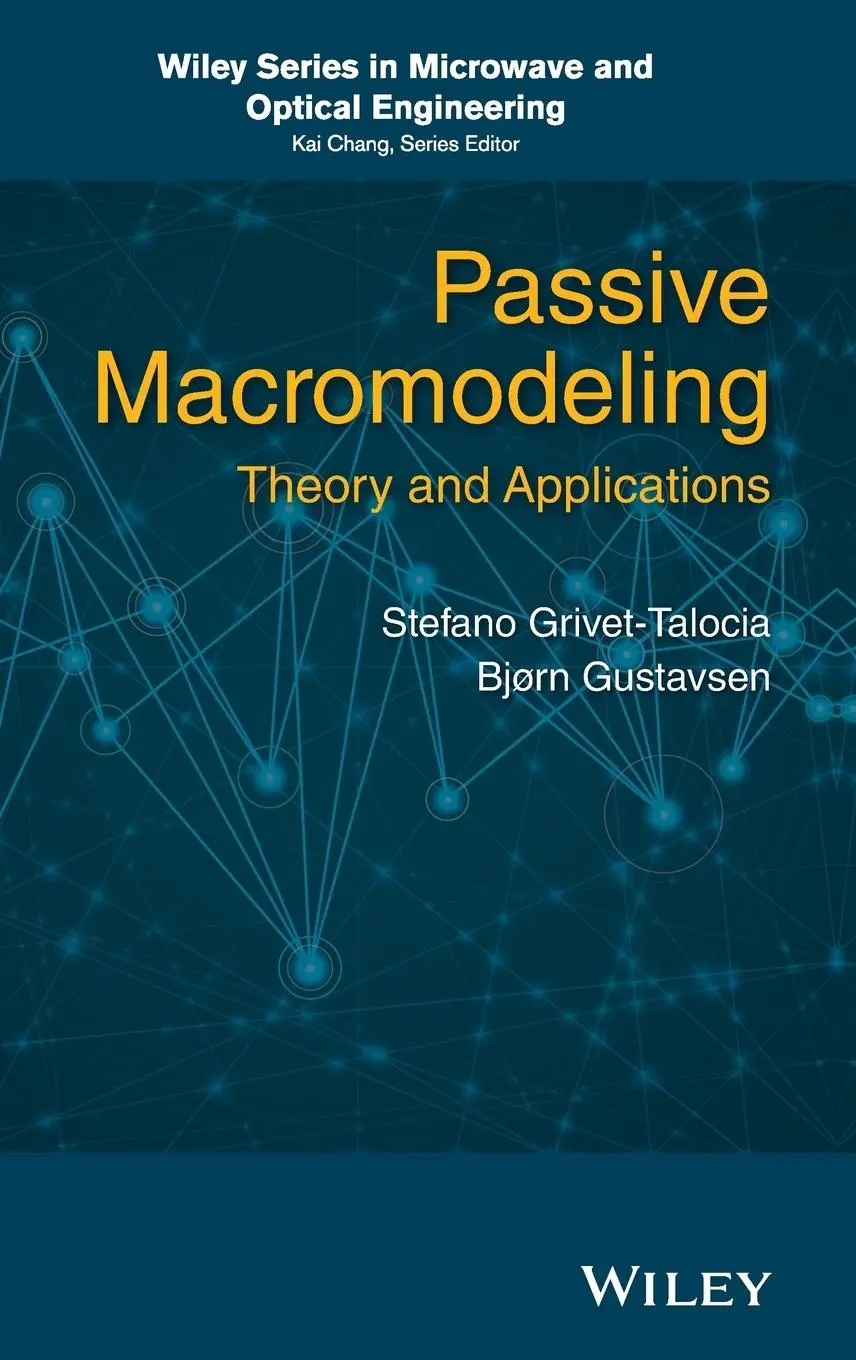Discover the foundations and nuances of electrical connectors in this comprehensive and insightful resource
Electrical Connectors: Design, Manufacture, Test, and Selection delivers a comprehensive discussion of electrical connectors, from the components and materials that comprise them to their classifications and underwater, power, and high-speed signal applications. Accomplished engineer and author Michael G. Pecht offers readers a thorough explanation of the key performance and reliability concerns and trade-offs involved in electrical connector selection.
Readers, both at introductory and advanced levels, will discover the latest industry standards for performance, reliability, and safety assurance. The book discusses everything a student or practicing engineer might require to design, manufacture, or select a connector for any targeted application. The science of contact physics, contact finishes, housing materials, and the full connector assembly process are all discussed at length, as are test methods, performance, and guidelines for various applications.
Electrical Connectors covers a wide variety of other relevant and current topics, like:
- A comprehensive description of all electrical connectors, including their materials, components, applications, and classifications
- A discussion of the design and manufacture of all parts of a connector
- Application-specific criteria for contact resistance, signal quality, and temperature rise
- An examination of key suppliers, materials used, and the different types of data provided
- A presentation of guidelines for end-users involved in connector selection and design
Perfect for connector manufacturers who select, design, and assemble connectors for their products or the end users who concern themselves with operational reliability of the system in which they're installed, Electrical Connectors also belongs on the bookshelves of students learning the basics of electrical contacts and those who seek a general reference with best-practice advice on how to choose and test connectors for targeted applications.
Discover the foundations and nuances of electrical connectors in this comprehensive and insightful resource
Electrical Connectors: Design, Manufacture, Test, and Selection delivers a comprehensive discussion of electrical connectors, from the components and materials that comprise them to their classifications and underwater, power, and high-speed signal applications. Accomplished engineer and author Michael G. Pecht offers readers a thorough explanation of the key performance and reliability concerns and trade-offs involved in electrical connector selection.
Readers, both at introductory and advanced levels, will discover the latest industry standards for performance, reliability, and safety assurance. The book discusses everything a student or practicing engineer might require to design, manufacture, or select a connector for any targeted application. The science of contact physics, contact finishes, housing materials, and the full connector assembly process are all discussed at length, as are test methods, performance, and guidelines for various applications.
Electrical Connectors covers a wide variety of other relevant and current topics, like:
- A comprehensive description of all electrical connectors, including their materials, components, applications, and classifications
- A discussion of the design and manufacture of all parts of a connector
- Application-specific criteria for contact resistance, signal quality, and temperature rise
- An examination of key suppliers, materials used, and the different types of data provided
- A presentation of guidelines for end-users involved in connector selection and design
Perfect for connector manufacturers who select, design, and assemble connectors for their products or the end users who concern themselves with operational reliability of the system in which they're installed, Electrical Connectors also belongs on the bookshelves of students learning the basics of electrical contacts and those who seek a general reference with best-practice advice on how to choose and test connectors for targeted applications.
Über den Autor
SAN KYEONG is a staff engineer at the R&D headquarters of Samsung Electro-Mechanics Company, currently working as a Research Scientist with the Center for Advanced Life Cycle Engineering (CALCE), University of Maryland, USA. He received a BE degree and PhD in chemical and biological engineering from the Seoul National University of Seoul, South Korea, in 2010 and 2016, respectively. He has expertise in material engineering for passive electronic components.
MICHAEL G. PECHT, PHD, is Chair Professor and Director of the Center for Advanced Life Cycle Engineering (CALCE) at the University of Maryland, USA. He received his PhD in Engineering Mechanics from the University of Wisconsin at Madison, USA. He is an IEEE, ASME, SAE, and IMAPS Fellow.
Inhaltsverzeichnis
About the Editors xiii List of Contributors xv Preface xvii 1 What Is an Electrical Connector? 1Michael G. Pecht and San Kyeong 1.1 Challenges of Separable Connectors 1 1.2 Components of a Connector 2 1.2.1 Contact Springs 2 1.2.2 Contact Finishes 3 1.2.2.1 Noble Metal Contact Finishes 4 1.2.2.2 Non-noble Metal Contact Finishes 4 1.2.3 Connector Housing 4 1.2.4 Contact Interface 5 1.3 Connector Types 6 1.3.1 Board-to-Board Connectors 7 1.3.2 Wire/Cable-to-Wire/Cable Connectors 8 1.3.3 Wire/Cable-to-Board Connectors 10 1.4 Connector Terminology 11 References 14 2 Connector Housing 17Michael G. Pecht 2.1 Mechanical Properties 17 2.2 Electrical Properties 19 2.3 Flammability 21 2.4 Temperature Rating 22 2.5 Housing Materials 23 2.5.1 Thermoplastic Polymers 25 2.5.1.1 Polyesters 25 2.5.1.2 Polyimides, Polyamide-imides, and Polyetherimides 26 2.5.1.3 Polyphenylene Sulfides 26 2.5.1.4 Polyether Ether Ketones 26 2.5.1.5 Liquid-Crystalline Polymers 27 2.5.1.6 Comparison ofThermoplastic Polymers 27 2.5.2 Thermosetting Polymers 27 2.5.3 Additives to Housing Materials 29 2.5.4 Manufacturing of Housing Materials 29 References 30 3 Contact Spring 31Michael G. Pecht 3.1 Copper Alloys 31 3.1.1 Unified Number System (UNS) 31 3.1.2 Properties of Copper Alloys 33 3.2 Nickel Alloys 37 3.3 Conductive Elastomers 37 3.4 Contact Manufacturing 38 References 41 4 Contact Plating 43Michael G. Pecht 4.1 Noble Metal Plating 43 4.1.1 Gold 44 4.1.2 Palladium 46 4.1.3 Combination of Gold and Palladium 47 4.2 Non-noble Metal Plating 47 4.2.1 Silver 48 4.2.1.1 Characteristics of Silver as a Contact Finish 49 4.2.1.2 Potential Tarnish-Accelerating Factors 50 4.2.1.3 Use of Silver in Typical Connectors 53 4.2.1.4 Managing Silver Corrosion 54 4.2.2 Silver-Palladium Alloys 55 4.2.3 Nanocrystalline Silver Alloys 55 4.2.4 Silver-Bismuth Alloys 57 4.2.5 Tin 57 4.2.6 Nickel Contact Finishes 59 4.3 Underplating 59 4.4 Plating Process 60 4.4.1 Electrolytic Plating 61 4.4.1.1 Rack Plating 61 4.4.1.2 Barrel Plating 61 4.4.2 Electroless Plating 62 4.4.3 Cladding 63 4.4.4 Hot Dipping 63 References 63 5 Insertion and Extraction Forces 67Michael G. Pecht 5.1 Insertion and Extraction Forces 67 5.2 Contact Retention 70 5.3 Contact Force and Deflection 70 5.4 Contact Wipe 71 References 73 6 Contact Interface 75Michael G. Pecht and San Kyeong 6.1 Constriction Resistance 76 6.2 Contact Resistance 77 6.3 Other Factors Affecting Contact Resistance 79 6.4 Current Rating 81 6.5 Capacitance and Inductance 82 6.6 Bandpass and Bandwidth 86 References 87 7 The Back-End Connection 89Chien-Ming Huang, San Kyeong and Michael G. Pecht 7.1 Soldered Connection 89 7.2 Press-Fit Connection 93 7.3 Crimping Connection 95 7.4 Insulation Displacement Connection 98 References 98 8 Loads and Failure Mechanisms 103San Kyeong, Lovlesh Kaushik and Michael G. Pecht 8.1 Environmental Loads 104 8.1.1 Temperature 104 8.1.2 Vibration Load 105 8.1.3 Humidity 106 8.1.4 Contamination 107 8.1.5 Differential Pressure 108 8.2 Failure Mechanisms in Electrical Connectors 109 8.2.1 Silver Migration 110 8.2.2 Tin Whiskers 114 8.2.3 Corrosion Failure 119 8.2.3.1 Dry Corrosion 119 8.2.3.2 Galvanic Corrosion 120 8.2.3.3 Pore Corrosion 121 8.2.3.4 Creep Corrosion 121 8.2.3.5 Fretting Corrosion 123 8.2.4 Arc Formation 124 8.2.5 Creep Failure 128 8.2.6 Wear 131 8.2.6.1 Adhesive Wear 132 8.2.6.2 Abrasive Wear 133 8.2.6.3 Fatigue Wear 134 8.2.6.4 Corrosive Wear 134 8.2.6.5 Fretting Wear 135 8.2.7 Frictional Polymerization 136 8.3 Case Study by NASA: Electrical Connectors for Spacecraft 137 References 139 9 Fretting in Connectors 147Deepak Bondre and Michael G. Pecht 9.1 Mechanisms of Fretting Failure 149 9.1.1 Material Factors That Affect Fretting 152 9.1.1.1 Contact Materials 152 9.1.1.2 Hardness 155 9.1.1.3 Surface Finish 155 9.1.1.4 Frictional Polymerization 156 9.1.1.5 Grain Size 156 9.1.1.6 Oxides 157 9.1.1.7 Coefficient of Friction 158 9.1.1.8 Electrochemical Factor 158 9.1.2 Operating Factors That Affect Fretting 158 9.1.2.1 Contact Load 158 9.1.2.2 Fretting Frequency 159 9.1.2.3 Slip Amplitude 162 9.1.2.4 Electric Current 162 9.1.3 Environmental Factors That Affect Fretting 163 9.1.3.1 Humidity 164 9.1.3.2 Temperature 164 9.1.3.3 Dust 165 9.2 Reducing the Damage of Fretting 167 9.2.1 Lubrication 168 9.2.2 Improvement in Design 168 9.2.3 Coatings 169 References 170 10 Testing 173Bhanu Sood andMichael G. Pecht 10.1 Dielectric With standing Voltage Testing 173 10.2 Insulation Resistance Testing 174 10.3 Contact Resistance Testing 176 10.4 Current Rating 179 10.5 Electromagnetic Interference and Electromagnetic Compatibility Testing 180 10.6 Temperature Life Testing 181 10.7 Thermal Cycling Testing 182 10.8 Thermal Shock Testing 182 10.9 Steady-State Humidity Testing 183 10.10 Temperature Cycling with Humidity Testing 184 10.11 Corrosion 184 10.11.1 Dry Corrosion 185 10.11.2 Creep Corrosion 186 10.11.3 Moist Corrosion 187 10.11.4 Fretting Corrosion 187 10.12 Mixed Flowing Gas Testing 188 10.12.1 Battelle Labs MFG Test Methods 189 10.12.2 EIA MFG Test Methods: EIA 364-TP65A 190 10.12.3 IEC MFG Test Methods: IEC 68-2-60 Part 2 190 10.12.4 Telcordia MFG Test Methods: Telcordia GR-63-CORE Section 5.5 191 10.12.5 IBM MFG Test Methods: G1(T) 191 10.12.6 CALCE MFG Chamber Capability 192 10.13 Vibration 192 10.13.1 Mechanical Shock 193 10.13.2 Mating Durability 193 10.14 Highly Accelerated Life Testing 194 10.15 Environmental Stress Screening 194 References 195 11 Supplier Selection 197Michael H. Azarian, Diganta Das and Michael G. Pecht 11.1 Connector Reliability 197 11.2 Capability Maturity Models 198 11.3 Key Reliability Practices 198 11.3.1 Reliability Requirements and Planning 199 11.3.2 Training and Development 200 11.3.3 Reliability Analysis 200 11.3.4 Reliability Testing 201 11.3.5 Supply-Chain Management 201 11.3.6 Failure Data Tracking and Analysis 202 11.3.7 Verification and Validation 202 11.3.8 Reliability Improvement 203 11.4 Reliability Capability of an Organization 203 11.5 The Evaluation Process 204 References 205 12 Selecting the Right Connector 207Ilknur Baylakoglu and San Kyeong 12.1 Connector Requirements Based on Design and Targeted Application 207 12.2 Mating Cycles 208 12.3 Current and Power Ratings 209 12.4 Environmental Conditions 212 12.5 Termination Types 213 12.6 Materials 213 12.6.1 Connector Housing Materials 216 12.6.2 Connector Spring Materials 217 12.7 Contact Finishes 217 12.8 Reliability 218 12.9 Raw Cables and Assemblies 219 12.10 Supplier Reliability Capability Maturity 219 12.11 Connector Selection Team 220 12.12 Selection of Candidate Parts from a Preferred Parts Database 221 12.13 Electronic Product Manufacturers' Parts Databases 221 12.14 Parts Procurement 223 12.15 Parts Availability 223 12.16 High-Speed Connector Selection 224 12.17 NASA Connector Selection 224 12.18 Harsh Environment Connector Selection 227 12.19 Fiber-Optic Interconnect Requirements by Market 229 12.20 High-Power Subsea Connector Selection 229 12.20.1 Undersea Connector Reliability 231 12.21 Screening Tests 232 12.22 Low-Voltage Automotive Single- and Multiple-Pole Connector Validation 236 12.23 Failure Modes, Mechanisms, and Effects Analysis for Connectors 236 12.24 Connector Experiments 242 12.25 Summary 246 References 246 13 Signal Connector Selection 251Michael G. Pecht 13.1 Issues Involving High-Speed Connectors 251 13.2 Signal Transmission Quality Considerations 252 13.2.1 Interconnect Delays 252 13.2.2 Signal Distortion 252 13.3 Electromagnetic Compatibility 253 13.4 Virtual Prototyping 254 13.4.1 TDR Impedance Measurements 255 13.4.1.1 Reflection Coefficient 255 13.4.1.2 TDR Resolution Factors 256 13.4.1.3 TDR Accuracy Factors 257 13.5 Vector Network Analyzer 259 13.6 Simulation Program with Integrated Circuit Emphasis (SPICE) 259 References 260 14 Advanced Technology Attachment Connectors 261Neda Shafiei, Kyle LoGiudice and Michael G. Pecht 14.1 ATA Connector and SATA Connector Overview 261 14.2 History of ATA and SATA 263 14.3 Physical Description of ATA Connectors, ATA Alternative Connectors, and SATA Connectors 264 14.4 ATA Standardization and Revisions 268 14.5 SATA Standardization and Revisions 270 14.6 SATA in the Future 272 References 273 15 Power Connectors 275Michael G. Pecht and San Kyeong 15.1 Requirements for Power Connectors 275 15.2 Power Connector Materials 276 15.3 Types of Power Connectors 277 15.4 Power Contact Resistance 280 15.5 Continuous, Transient, and Overload Current Capacities 282 15.5.1 Continuous Current Capacity 282 15.5.2 Transient Current Capacity 283 15.5.3 Overload Current Capacity 284 15.6 Current Rating Method 284 References 286 16 Electrical Connectors for Underwater Applications 289Flore Remouit, Jens Engström and Pablo Ruiz-Minguela 16.1 Background and Terminology 290 16.1.1 History 291 16.1.2 Terminology 291 16.2 Commercial Off-the-Shelf (COTS) Connectors 292 16.2.1 Rubber-Molded 292 16.2.2 Rigid-Shell or Bulkhead Assemblies 293 16.2.3 Fluid-Filled UnderwaterMateable 294 16.2.4 Inductive Coupling 295 16.2.5 Assemblies (Non-unmateable) 295 16.3 Connector Design 296 16.3.1 Thermal Design 296 16.3.2 Electrical Properties 297 16.3.3 Mechanical Properties 299 16.3.4 Material Choices 300 16.3.5 Specifications for Underwater Connectors 301 16.4 Connector Deployment and Operation 302 16.4.1 Connection Procedure 302 16.4.2 Connection Layout 303 16.4.3 Reliability 305 16.5 Discussion and Conclusion 305 References 306 17 Examples of Connectors 313Lei Su, Xiaonan Yu, San Kyeong andMichael G. Pecht 17.1 Amphenol ICC M-SeriesTM 56 Connectors 313 17.2 Amphenol ICC Paladin®Connectors 313 17.3 Amphenol ICC 3000W EnergyEdgeTM X-treme Card Edge Series 314 17.4 Amphenol ICC FLTStack Connectors 314 17.5 Amphenol ICC HSBridge Connector System 315 17.6 Amphenol ICC MUSBR Series USB 3.0 Type-A Connectors 315 17.7 Amphenol ICCWaterproof USB Type-CTM Connectors 316 17.8 Amphenol ICC NETBridgeTM Connectors 316 17.9 Amphenol Sine Systems DuraMateTM AHDP Circular Connectors 317...











